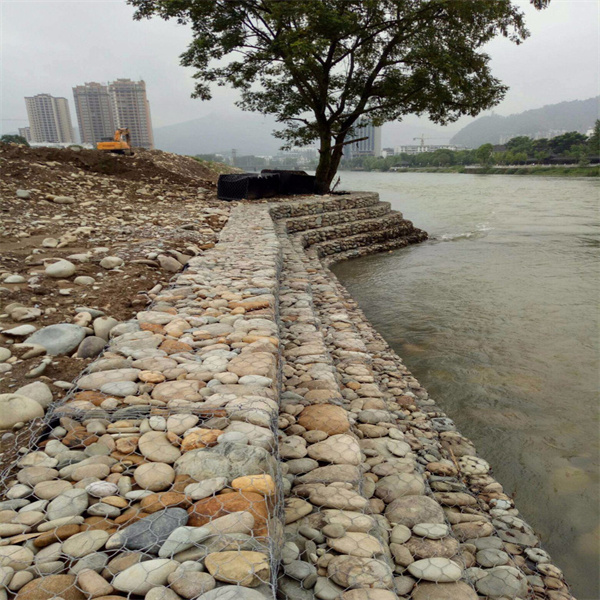Oct . 22, 2024 14:37 Back to list
China Gabion Wall Construction Techniques and Innovations for Sustainable Engineering Solutions
Gabion Wall Engineering in China Techniques, Applications, and Advantages
Gabion walls have emerged as a highly effective solution for various engineering challenges in China, particularly in civil engineering and environmental protection. A gabion wall consists of wire mesh baskets filled with stones, rocks, or sometimes concrete, forming a robust and versatile structure that serves numerous purposes, from erosion control to reinforcement of slopes and as flood barriers.
Understanding Gabion Walls
Traditionally, gabions were used in military engineering, but their application has evolved over time. In the context of civil engineering, gabion walls are gaining popularity due to their sustainability, flexibility, and economic feasibility. The wire mesh baskets are typically made from galvanized steel or other corrosion-resistant materials, enhancing their durability in various environmental conditions. The choice of fill material can greatly influence the performance and aesthetic appeal of the wall, allowing for customization based on project requirements.
Applications in China
1. Erosion Control With China’s diverse landscape ranging from mountainous regions to coastal areas, soil erosion has become a major concern. Gabion walls are extensively used to protect riverbanks and shorelines, preventing soil loss and maintaining the integrity of the land. Their porous design also allows for natural water drainage, reducing hydrostatic pressure against the wall.
2. Slope Stabilization In areas prone to landslides, a gabion wall can effectively stabilize the slope by absorbing and distributing the weight of the overlying soil. By minimizing the gravitational forces acting on the slope, these structures provide a solution to landslides, thus protecting infrastructure and ensuring safety for communities.
3. Flood Control Flood resilience has become increasingly important in China, especially with the rise in climate change-induced extreme weather events. Gabion walls can be constructed as temporary or permanent flood barriers. Their ability to absorb and dissipate wave energy makes them effective in mitigating flood damage.
4. Landscaping and Aesthetic Features Beyond practical applications, gabion walls are also used in landscape design. They provide unique visual elements while also functioning as retaining walls or garden features. The fill material can be chosen to complement surrounding landscapes, making gabion walls an attractive option for urban and rural developments alike.
Advantages of Gabion Walls
china gabion wall engineering

The advantages of using gabion wall engineering in China stem from both environmental and economic perspectives
- Sustainability Gabion walls utilize natural materials which can blend seamlessly into the environment
. Moreover, they can be filled with local stones, reducing transportation costs and environmental impact.- Cost-Effectiveness When compared to conventional wall structures, gabion walls often require less investment. Their construction does not necessitate heavy machinery, which can further reduce expenses associated with labor and equipment.
- Versatility Gabion walls can be designed in various configurations, easily adapting to different terrains and environments. This flexibility makes them suitable for a wide range of applications.
- Low Maintenance Once installed, gabion walls require very minimal maintenance. The durable materials used in their construction ensure longevity, even in harsh weather conditions.
Challenges and Considerations
Despite their numerous benefits, gabion walls also come with some challenges. The quality of materials used, particularly the wire mesh, is critical to the overall performance of the wall. Corrosion can weaken the structure over time if appropriate materials are not used. Additionally, local regulations and environmental considerations must be adhered to during the construction process to ensure ecological balance.
Conclusion
In conclusion, gabion walls have established themselves as a pivotal element in China's approach to civil engineering and environmental management. Their applications in erosion control, slope stabilization, and flood management are invaluable for safeguarding both infrastructure and communities. The versatility, sustainability, and cost-effectiveness of gabion walls make them an attractive option for future construction projects, reflecting a significant trend in modern engineering practices. As China continues to face environmental challenges, the role of gabion walls is expected to grow, paving the way for innovative designs and enhanced resilience in the face of nature's unpredictability.
-
The Role of Galvanized Gabion Mesh in Riverbank Protection
NewsJun.26,2025
-
The Role of Gabion Basket Raised Bed in Sustainable Gardening
NewsJun.26,2025
-
Quality Assurance of Wire Mesh Gabion Baskets
NewsJun.26,2025
-
Installation Guide for Welded Gabion Box
NewsJun.26,2025
-
How to Choose the Right Gabion Box
NewsJun.26,2025
-
Different Types of Gabion Wire Mesh
NewsJun.26,2025
-
Why PVC Coated Gabion Mattress Is the Best Solution for Long-Term Erosion Control
NewsMay.23,2025






